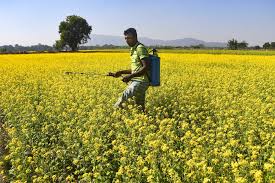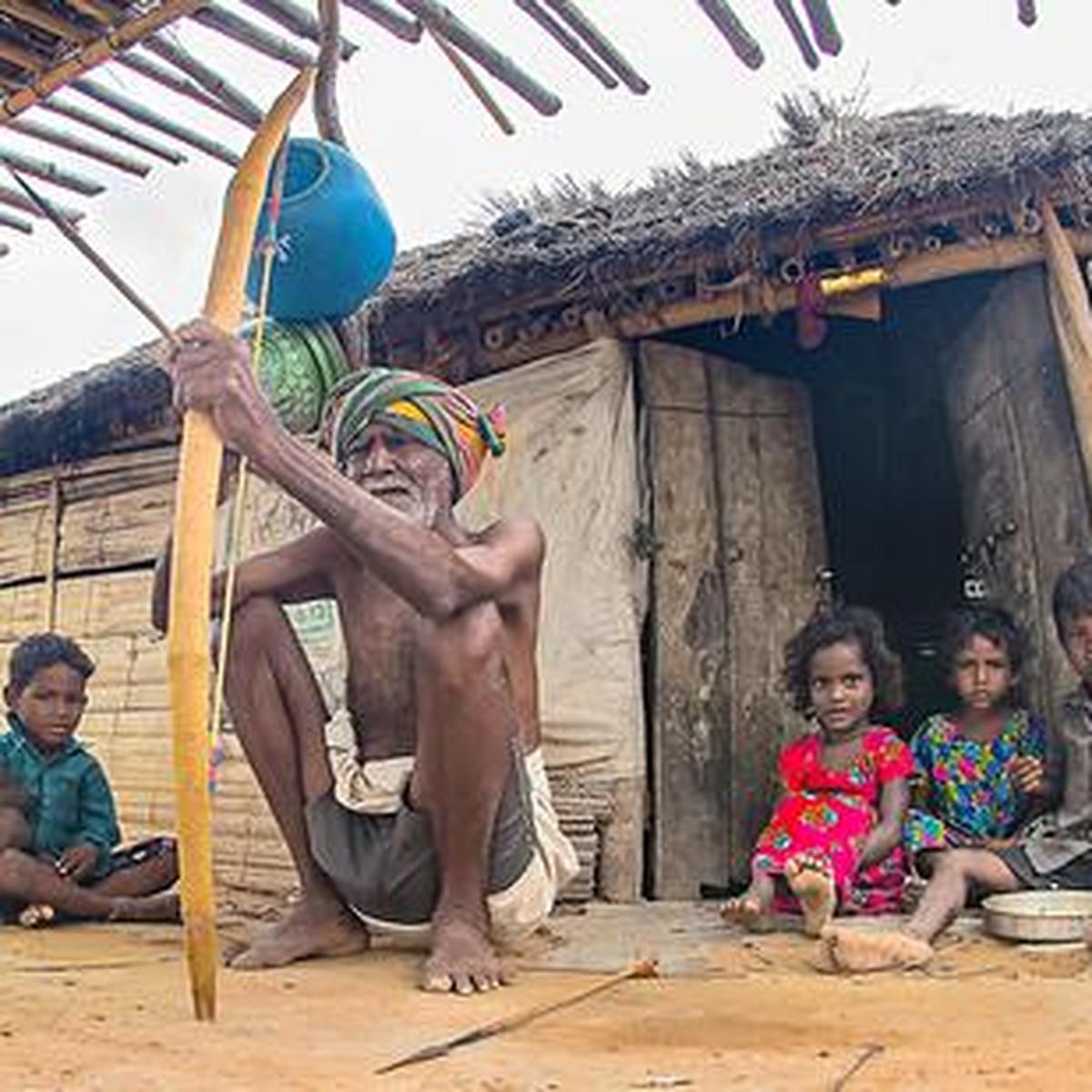India’s Agri-Export Regime

- 17 May 2025
In News:
India has recently inked free trade agreements (FTAs) with the United Kingdom, a trade and economic partnership agreement with the EFTA bloc, and concluded terms of reference for an India-US trade agreement. It is also negotiating with the European Union. In short, India is racing to plug itself into shifting global supply chains. Yet amid all the flashbulbs and photo?ops, India’s agriculture sector remains conspicuously absent.
Definition:
India’s agricultural export regime comprises the policies, institutions, and infrastructure that regulate and promote the export of farm produce.
Present Status:
- In 2023–24, India’s agricultural exports declined to $48 billion, down from $52 billion in 2022–23.
- Basmati rice accounts for approximately 21% of the total agri-export value.
- Bodies such as APEDA and branding tools like ODOP-GI tags play a role in market promotion.
- Agricultural products have been kept largely outside recent FTAs due to concerns over food security, rural employment, and political sensitivity.
Key Challenges in India’s Agri-Export Ecosystem
- Limited FTA Coverage:Agriculture is often excluded or granted extended transition periods in trade agreements, limiting access to foreign markets.
- High Rejection Rates:Several Indian agri-products face export rejections due to non-compliance with Sanitary and Phytosanitary (SPS) norms and pesticide residue limits (e.g., mangoes, groundnuts).
- Governance Gaps:With agriculture under the State List and trade under the Union List, there is often a disconnect in policy coordination, affecting timely decisions.
- Lack of Value Addition:A significant share of exports is in the form of raw produce, with insufficient emphasis on processed or brandedagri-goods.
- Infrastructure Deficits:Inadequate cold storage, pre-cooling facilities, and container depots—particularly in landlocked states like Uttar Pradesh and Madhya Pradesh—hinder export readiness.
- Subsidy Distortions:Input subsidies on power, water, and fertilizers disincentivize farmers from diversifying to export-oriented, high-value crops.
Strategic Roadmap for Agri-Export Growth
- Boost Value Addition:
- Establish agro-processing zones near APMCs.
- Incentivize processed exports through output-linked schemes.
- Strengthen Policy Coordination:Form a National Agri Trade Council involving the Centre, States, APEDA, FSSAI, and industry stakeholders to harmonize regulations and streamline decision-making.
- Reform Subsidy Framework:Transition to Direct Benefit Transfers (DBT) instead of input-based subsidies to encourage crop diversification and resource efficiency.
- Leverage Agri-Tech Solutions:Expand use of AI tools for crop health monitoring, promote vernacular advisories, and enhance access to real-time market data.
- Upgrade Infrastructure:
- Deploy GIS-based mapping for tracking surplus zones and export potential.
- Develop pre-cooling chains, inland ports, and container hubs in the hinterlands.
- Improve Connectivity in Interior States:Focus on building logistics networks in non-coastal states like UP and MP to integrate them with export supply chains.
Tsarap Chu Conservation Reserve
- 17 May 2025
In News:
Recently, the Himachal Pradesh Government notified the Tsarap Chu Conservation Reserve, making it India’s largest conservation reserve, spanning 1,585 sq km. It is located in the Spiti Valley of Lahaul-Spiti district, a high-altitude, cold desert ecosystem.
Legal Status:
- Declared under Section 36A(1) of the Wildlife (Protection) Act, 1972
- It is Himachal Pradesh’s fifth conservation reserve after Darlaghat, Naina Devi, Potter Hill, and Shilli
Geographical Significance:
- Boundaries:
- North: Union Territory of Ladakh
- East: Kibber Wildlife Sanctuary (up to Malang Nala and LungarLungpa)
- South: KabjimaNala
- West: Chandratal Wildlife Sanctuary
- Encompasses the confluence of Unam River and CharapNala
- Serves as the catchment area of Charap Nallah and a critical wildlife corridor linking Kibber and Chandratal sanctuaries
Ecological Importance:
- Identified as a high-density snow leopard habitat
- Other key species:
- Tibetan wolf, bharal (blue sheep), Himalayan ibex
- Kiang (Tibetan wild ass), Tibetan argali
- Rich in avian biodiversity: Rose Finch, Tibetan Raven, Yellow-billed Chough
Management and Community Involvement:
- To be managed by a Conservation Reserve Management Committee including local Panchayat representatives
- Emphasizes community-based conservation, balancing ecological goals with local livelihoods
- Promotes eco-tourism, wildlife research, and nature-based livelihood opportunities
Chenchu Tribe and Indiramma Housing Scheme

- 17 May 2025
In News:
In May 2025, the Telangana government announced the sanctioning of 10,000 Indiramma houses to Chenchu tribal families under a saturation approach in four Integrated Tribal Development Agencies (ITDA)—Utnur, Bhadrachalam, Munnanur, and EturuNagaram. An additional 700 units per ST assembly constituency have also been approved within these ITDA areas.This move aligns with the state’s commitment to improving housing infrastructure in tribal areas.
About Chenchu Tribe
Classification:
- Particularly Vulnerable Tribal Group (PVTG) in Andhra Pradesh
- Also found in Telangana, Karnataka, and Odisha
Habitat:
- Primarily inhabit the Nallamalai forests (Eastern Ghats)
- Chenchu settlements are called “Penta”, consisting of kin-based scattered huts
Language:
- Native Chenchu language (Dravidian family)
- Many also speak Telugu
Social Structure:
- Small conjugal families with gender equality
- Village elder, known as “Peddamanishi”, serves as the community authority
Livelihood:
- Forest-based subsistence lifestyle
- Depend on collection of non-timber forest produce (NTFPs) such as:
- Roots, tubers, fruits, beedi leaves, honey, gum, mohua flowers, tamarind
- Some serve as forest laborers, but mostly rely on traditional hunting and gathering
Religion & Culture:
- Worship local deities; blend of indigenous and Hindu practices
- Hold deep spiritual ties with the Srisailam Temple (dedicated to Lord Shiva and Devi Brahmaramba), which lies at the heart of their region
- Chenchus enjoy customary privileges at the Srisailam shrine
Dr. Ajay Kumar appointed as UPSC Chairman

- 17 May 2025
In News:
Dr. Ajay Kumar, former Defence Secretary and a 1985-batch IAS officer of Kerala cadre, took oath as the new Chairman of the Union Public Service Commission (UPSC) on May 2025. The oath was administered by Lt. Gen. Raj Shukla, the senior-most member of the Commission, following the end of Preeti Sudan’s tenure on April 29, 2025.
Profile of Dr. Ajay Kumar:
- Academic Qualifications:
- B.Tech in Electrical Engineering – IIT Kanpur
- M.Sc. in Applied Economics – University of Minnesota, USA
- Ph.D. in Business Administration – Carlson School of Management, USA
- Key Positions Held:
- Managing Director, IT Department, Government of Kerala
- Secretary, Defence Production
- Director General, National Informatics Centre
- Secretary, Ministry of Defence
- E-Governance Contributions:
- Initiated digital platforms like Jeevan Pramaan, MyGov, PRAGATI, and Cloud First Policy
- Introduced biometric attendance systems and digital OPD registrations in AIIMS
He brings over 35 years of administrative experience in both state and central governments and has several publications in reputed journals.
Union Public Service Commission (UPSC) – At a Glance
Constitutional Backing:
- Established under Articles 315–323 of the Constitution
- Originally formed: October 1, 1926
- Became a constitutional body on January 26, 1950
Composition:
- Comprises a Chairman and other members, appointed by the President
- At least half the members must have held government office for 10+ years
- Presently, the Commission has vacancies for 2 members
Tenure:Chairman/Members hold office for 6 years or until 65 years of age, whichever is earlier
Resignation & Removal:
- Can resign by writing to the President
- Can be removed for misbehavior, only after an inquiry by the Supreme Court
Post-Tenure Restrictions:
- Chairman: Not eligible for any further government employment
- Members: Can be appointed as Chairman of UPSC or State PSC, but not to any other office of profit
Functions of UPSC:
- Central recruitment agency for:
- Civil Services Examination (CSE)
- Engineering Services (ESE)
- Combined Medical Services (CMS), and more
- Advises the government on:Recruitment rules, appointments, promotions, and disciplinary matters
Sakurajima Volcano Eruption
- 17 May 2025
In News:
Japan’s Sakurajima volcano, located in Kagoshima Prefecture on the southern island of Kyushu, recently erupted sending a dense ash plume 3,000 metres into the sky. The eruption originated from the Minamidake summit crater and was accompanied by a Level 3 volcanic alert, advising people to stay away from the vicinity.
Key Features of Sakurajima Volcano:
- Type: Stratovolcano (composite volcano)
- Geological Setting: Situated on a convergent plate boundary, formed from subduction-related volcanic activity.
- Structure: Comprises North Peak and South Peak, and lies on the southwestern rim of the Aira Caldera.
- Historical Significance: Was an island until the 1914 eruption, which connected it to the ?sumi Peninsula.
- Frequent Activity: One of Japan's most active volcanoes, experiencing daily minor eruptions and emitting continuous volcanic smoke.
Volcanic Characteristics:
- Lava Type:Andesitic – high in gas content and viscosity, leading to explosive eruptions.
- Hazards: Produces ash fall, pyroclastic flows, volcanic bombs, and toxic gases.
- Proximity to Populated Areas: Only 4 km from Kagoshima City, making it a high-risk volcano with strict monitoring by the Japan Meteorological Agency (JMA).
Impact and Preparedness:
- No injuries or major damages have been reported as of now.
- Ash fall warnings were issued for Kagoshima, Kumamoto, and Miyazaki prefectures.
- The eruption highlights Japan’s robust disaster preparedness and early warning systems, essential due to the country's location on the Pacific Ring of Fire.
